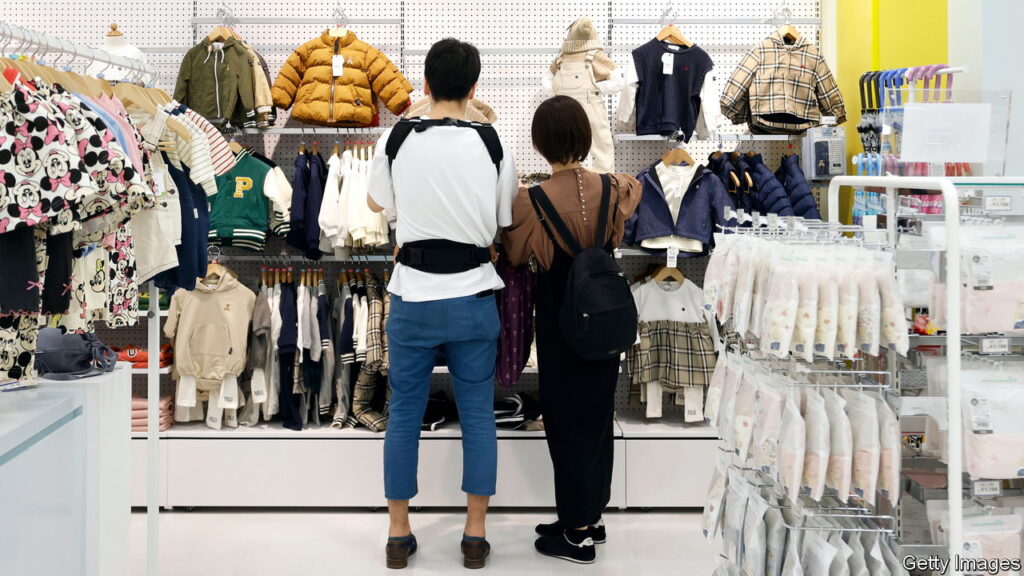Could the inflation nightmare soon be over? Across the oecd club of mostly rich countries, consumer-price inflation has fallen from a peak of 10.7% in October 2022 to 6.2%. Wage growth is slowing, too. Investors are hopeful that, before long, more progress will be made, allowing central bankers to cut interest rates.
They may be getting ahead of themselves. Last year The Economist calculated a measure of “inflation entrenchment”. It showed that the disease, symptoms of which first appeared in America, was starting to infect the entire rich world. We have repeated the analysis, focusing on five measures: core inflation, unit labour costs, “inflation dispersion”, inflation expectations and Google-search behaviour. We rank ten countries on each indicator, then combine the rankings to form an “inflation-entrenchment” score.
Overall, the data show that inflation remains entrenched, perhaps more so than in 2022. The country with the worst score last May, Canada, would have only been third-worst this time around. Things are dire in Anglophone countries, including Australia and Britain. Yet there are bright spots. Italy and Spain are doing well. In Japan and South Korea the battle could be nearly over. What can the strugglers learn from the inflation-killers?
Start with the problem countries. In Australia, our worst performer, the labour market is on fire. Over the past year labour costs, measured by how much employers pay workers to produce a unit of output, have risen by a chunky 7.1%—faster than in any other country sampled. Nor does anywhere else have more “inflation dispersion”, which we define as the share of consumer prices across the economy that are rising by more than 2% year on year.
Other Anglophone countries have different problems. A data set from researchers at the Federal Reserve Bank of Cleveland; Morning Consult, a data firm; and Raphael Schoenle of Brandeis University provides a cross-country gauge of what the public expects to happen to prices. Canadians think that consumer prices will rise by 5.7% over the next year, the highest of any country in our sample. Canadians are also googling terms related to inflation most often. Britons, for their part, are suffering from core inflation (ie, excluding food and energy prices) of 6.1%, year on year, the highest of any country. America does not do very badly on any measure. Equally, however, it does not do very well on any.
This stickiness of inflation may reflect the fact that fiscal stimulus across Anglophone countries in 2020-21 was about 40% more generous than in other rich places. It was also more focused on handouts to households, such as stimulus cheques, than on measures to keep businesses alive, which may have further stoked demand. Indeed, a new paper by Robert Barro of Harvard University and Francesco Bianchi of Johns Hopkins University finds evidence for a link between fiscal expansion during the covid-19 pandemic and subsequent inflation.
Monetary policy is another factor at work. When covid struck, central banks in America, Australia, Britain and Canada reduced interest rates by one percentage point on average, twice as big a cut as in other countries in the rich world. This extra stimulus may have pushed up inflation. In the past year or so English-speaking countries have also received lots of migrants, which in the short term can be inflationary, because new arrivals compete for housing and drive up rents. Estimates by Goldman Sachs, a bank, imply that Australia’s current annualised net-migration rate of 500,000 people is raising inflation by around half a percentage point.
So why are countries elsewhere doing better? Asia’s brief experience with high inflation could soon be over. Japanese people expect prices to rise by just 1.5% over the next year; South Koreans have better things to do online than to search for information about inflation. Recent history could play a role in explaining this performance. Before covid, rich Asian countries had lived with low inflation for so long that it may have seemed like the natural state of affairs. Following the jump in inflation in 2021-22, the behaviour of firms and households may have shifted in a disinflationary direction more quickly. By contrast, in places like Britain, which had experienced inflation surges in 2008, 2011 and 2017, people may have developed a more inflationary mindset.
In Europe inflation expectations have fallen a long way from their peak. The picture is particularly rosy in parts of the continent. Owing to a combination of policy and luck, energy-price rises were not as sharp last year in Italy and Spain as in other countries, which may have prevented people from anticipating further inflation.
France, with a perkier economy, is somewhere between the Anglosphere and Asia. Germany is a different story. Once upon a time, its workers were known for their pay restraint. Now, with an uber-tight jobs market, unit labour costs are rising by more than 7% a year. Price dispersion is also unusually high. In what will be a source of satisfaction in many European capitals, German economists are increasingly looking at southern European countries with envy. ■
